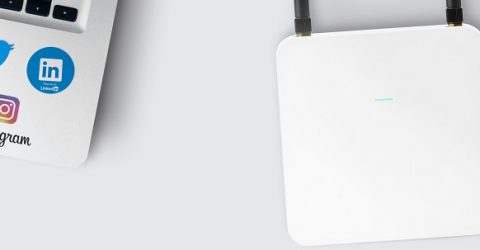FACT: You don’t have to use the wifi router your ISP supplies
ISP branded routers are often disappointingly cheap and inefficient - switching could make a huge difference

Signing up to a new broadband provider involves a number of familiar steps.
First, you choose your provider and contract. Then there’s documentation to sign or approve.
You’ll receive paperwork confirming your contract details. And then a wireless router arrives.
The arrival of this underwhelming plastic box is often accompanied by a rather exaggerated sense of excitement, with slogans like “Unbox me and start your adventure” on the packaging.
MoreChanging your router’s DNS settings could speed things up, and keep you safe!
Nowadays, the process of going online is so commonplace that these sentiments seem almost twee.
And the product within that hyperbolic packaging will almost inevitably be a disappointment.
Because most ISP routers are free, they’re built to tight budgets.
You’re unlikely to see external aerials or benefit from parental controls, while you might even notice uncanny similarities between one ISP’s hardware and another.
(The routers may be identical bar their colour and the logos glued onto them).
Performance will be decent rather than impressive, and coverage is likely to falter as soon as you step into the garden.
Yet most consumers simply accept these limitations, mistakenly assuming they can’t expect anything better.
A rose by any other name…
Even if it has your ISP’s logo on it and a branded card with the router’s name and password on it, you aren’t forced to use the hardware supplied when your broadband contract begins.
Any wireless router will process data streams arriving through your master phone socket, distributing wireless connectivity at either 2.4GHz or 5GHz around the home.
Your ISP doesn’t do anything to customise the data streams coming into your home, so you could plug a TalkTalk router into a connection provided by BT, and it should work fine.
Plus, shop-bought devices are more likely to offer the latest technologies.
They may benefit from WiFi 6 protocols and tri-band connectivity, with twin 5GHz bands alongside the congested-but-ubiquitous 2.4GHz frequency.
The exception to the rule
While the above applies to any ISP routers relying on Openreach technology, things are a bit different for Virgin Media customers.
The unique way in which data is piped into homes along proprietary fibre cabling means Virgin’s supplied router has to be retained.
MoreIs your wifi ready for PS5?
However, there’s nothing to stop you attaching another router to the Virgin Hub, effectively using the ISP hardware as a conduit.
The second router can then conduct the job of distributing wireless data around the home, with all its attendant benefits.






